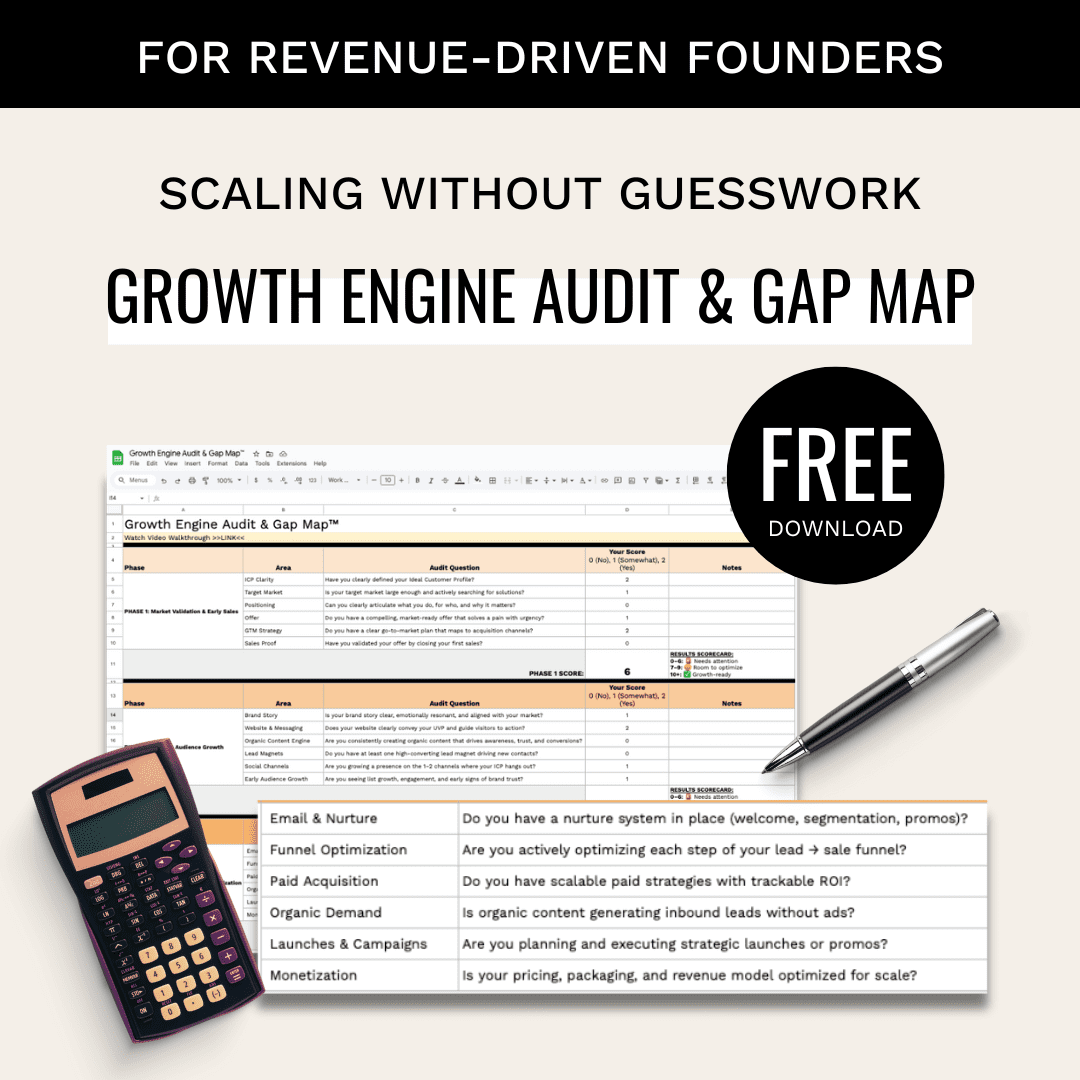Tracking vendor performance ensures efficiency, reliability, and cost-effectiveness. Poor supplier performance can lead to costly setbacks, so measuring the right metrics is critical. Here’s a quick breakdown of the key ones:
- Delivery Time Accuracy: Measures on-time delivery rates and adherence to schedules.
- Order Fulfillment Accuracy: Tracks how often vendors deliver correct products, quantities, and meet documentation standards.
- Quality Scores: Evaluates compliance with specifications, defect rates, and adherence to standards.
- Error Rates: Monitors mistakes in transactions and their impact.
- Cost vs. Results: Analyzes ROI, cost savings, and vendor-driven revenue.
- Team Performance Costs: Assesses labor efficiency and rework frequency.
- Market Performance Standards: Benchmarks vendor performance against industry norms.
Why It Matters: These metrics help manage risks, optimize costs, and ensure consistent quality. Tools like ERP systems, real-time dashboards, and AI can simplify tracking and improve vendor accountability.
Quick Tip: Start by defining clear KPIs, use automated tools for tracking, and conduct regular performance reviews to make data-driven vendor decisions.
Using SLAs and KPIs for Effective Vendor Performance …
What Are Vendor Performance Metrics
Vendor performance metrics measure how effectively suppliers, agencies, and service providers meet expectations for efficiency, reliability, and goals. These metrics help assess their impact on overall business performance. Below, we’ll break down the key metrics used to evaluate vendor performance.
1. Delivery Time Accuracy
Delivery time accuracy reflects how well vendors stick to their delivery schedules, directly impacting efficiency and customer satisfaction. Here’s how you can measure this effectively:
- On-Time Delivery Rate: Calculate this by dividing the number of on-time deliveries by the total deliveries, then multiply by 100. For instance, if a vendor delivers 45 out of 50 shipments on time, the on-time delivery rate is 90%.
- Delivery Variance Tracking: Keep an eye on the gap between promised and actual delivery dates. Tracking early or late deliveries can help identify operational issues. Adjust your evaluations based on the specific context and how delays affect your operations.
- Time Window Compliance: Set specific delivery windows to better track punctuality. For example, defining clear delivery hours or appointment times ensures vendor performance aligns with your schedule.
For service-based deliverables, use milestones with clearly defined deadlines to maintain accurate tracking of performance.
2. Order Fulfillment Accuracy
Order fulfillment accuracy tracks how well vendors meet your specified product and quantity requirements. It’s a key indicator of vendor reliability and operational performance.
What Makes Up Order Fulfillment Accuracy?
- Perfect Order Rate: This measures the percentage of orders delivered without mistakes. It includes:
- Delivering the correct quantities
- Matching the requested product specifications
- Providing accurate documentation
- Ensuring items arrive undamaged
- Meeting all packaging standards
These elements work together to ensure reliable and consistent order fulfillment. When combined with delivery accuracy, this metric gives a clearer picture of a vendor’s dependability.
3. Quality Scores
Quality scores are a key part of vendor performance metrics, measuring how well vendors meet established standards. They help ensure smooth operations and boost customer satisfaction.
Key Components of Quality Scores
A quality score is built from three main factors:
| Component | Weight | Target Benchmark | Measurement Method |
|---|---|---|---|
| Product/Service Specifications | 40% | ≥98% compliance | Lab tests & audits |
| Defect/Return Rates | 30% | ≤2% defects | Quality control inspections |
| Compliance Standards | 30% | 100% adherence | Audit results |
Modern manufacturing vendors often use IoT and AI to catch defects as they happen. These metrics are then combined using a weighted formula to create an overall performance score.
How to Calculate Quality Scores
The formula for calculating a quality score is:
Quality Score = (Defect-Free Deliveries × 0.4) + (Customer Satisfaction × 0.3) + (Cost Efficiency × 0.3)
For example, if a vendor achieves 95% defect-free deliveries, 90% customer satisfaction, and 85% cost efficiency, their quality score would be approximately 91 out of 100.
Why Quality Scores Matter
Businesses often replace vendors scoring below 80%, and structured monitoring has been shown to lower defect rates. These scores are a direct reflection of vendor reliability and efficiency.
Tools for Monitoring Quality
To track and manage quality, businesses can use tools like:
- ERP platforms: Microsoft Dynamics 365
- Quality Management Systems: Qualio
- Real-time dashboards: Tableau
In industries where temperature control is critical, vendors using climate-controlled logistics have reported 37% fewer defects.
Setting Quality Benchmarks
The Six Sigma methodology sets a goal of just 3.4 defects per million opportunities. Some industries may require even stricter standards. For instance, a U.S.-based e-commerce company reduced product return rates from 12% to 4% in just six months by introducing vendor quality dashboards and holding biweekly reviews. This saved them $2.7 million in reverse logistics costs.
These practices not only improve vendor oversight but also ensure alignment with broader operational goals, driving consistent performance improvements.
4. Error Rates
Error rates are a key indicator of a vendor’s reliability and efficiency. This metric works alongside delivery accuracy, fulfillment precision, and quality scores to give a well-rounded view of performance.
How to Calculate Error Rates
The formula for calculating error rates is straightforward:
(Number of Errors ÷ Total Transactions) × 100.
To get a complete picture, track both the total number of errors and their severity-weighted impact.
Using Data to Manage Errors
Tracking errors with data can help you:
- Pinpoint root causes by analyzing patterns
- Use historical data to prevent future issues
- Set benchmarks to encourage consistent improvement
- Hold vendors accountable for their performance
Highlighting the importance of addressing errors quickly, Lillian Pierson, a marketing leader, notes:
"I bring a data-driven approach, a passion for innovation, and a relentless focus on results to help you achieve your most ambitious goals." – Lillian Pierson, Marketing Leader
Best Practices for Monitoring Error Rates
Adopt systematic methods to track and analyze errors effectively. Here are some useful practices:
- Real-Time Tracking: Use automated tools to flag errors as they happen, allowing for immediate fixes and avoiding larger problems.
- Classify Errors by Severity: Group errors based on their impact – critical (causing service interruptions), major (causing delays), or minor (having minimal effects).
- Analyze Trends: Study error patterns over time to identify recurring issues, seasonal changes, or gaps in training and systems.
Ways to Reduce Error Rates
Lowering error rates requires a structured approach. Consider these strategies:
- Strengthen quality control processes
- Offer training programs for vendors
- Set up clear and effective communication channels
- Perform regular performance evaluations
- Define and aim for gradual improvement goals
sbb-itb-e8c8399
5. Cost vs. Results
Evaluating the financial impact of vendor partnerships requires a detailed, data-focused approach. This helps determine if your vendor investments are meeting your business goals.
Key Metrics to Track
Keep an eye on these financial performance indicators to assess costs versus outcomes:
- Cost per deliverable
- Return on vendor investment (ROVI)
- Savings compared to your baseline costs
- Revenue generated through vendor activities
- Efficiency in resource use
With these metrics in hand, you can structure your analysis for actionable insights.
How to Analyze Costs and Results
1. Set Baseline Metrics
Start by defining:
- Current costs
- Expected improvements
- Target ROI
- Resource efficiency goals
2. Monitor Costs and Results
Use the following categories to track both direct and indirect costs, alongside results:
| Cost Category | Metrics to Track |
|---|---|
| Direct Costs | Vendor fees Material costs Implementation expenses |
| Indirect Costs | Management overhead Training needs System integration costs |
| Results | Performance improvements Revenue generation Operational efficiency |
3. Calculate ROI
Use this simple formula to measure ROI:
(Value of Results – Total Costs) ÷ Total Costs × 100
This calculation provides a clear picture of your vendor strategy’s financial impact.
Using Data to Improve Performance
By consistently tracking key performance indicators (KPIs), you can strengthen vendor accountability and gain valuable insights:
- Conduct regular performance reviews based on real-world data
- Identify areas to cut costs or improve efficiency
- Make informed decisions about continuing or ending vendor relationships
- Clearly communicate expectations and results with stakeholders
At Data-Mania, we apply these principles to ensure vendor partnerships are both cost-effective and aligned with long-term business goals.
Tips for Success
- Define KPIs before starting any vendor engagement
- Set up regular reporting schedules
- Use data analytics to spot trends and patterns
- Keep systematic records of results
- Adjust your strategy based on performance reviews
These financial metrics, combined with operational insights, help ensure your vendor choices contribute to both efficiency and growth.
6. Team Performance Costs
Analyzing team performance costs offers insights into operational efficiency beyond just financial and quality metrics. Poor vendor team performance can increase project costs by 18–27% due to delays and quality issues.
Key Performance Cost Metrics
| Metric | Target Range | Impact on Costs |
|---|---|---|
| Labor Hour Utilization | 75–85% billable hours | Directly impacts project ROI |
| Cost per Unit of Output | $12.50–$18.75 per hour | Reflects resource efficiency |
| Rework Frequency | <20% of project costs | Drives up overall expenses |
| Error Resolution Time | Under 2 hours per ticket | Influences operational costs |
Hidden Cost Factors
Some costs may not be immediately visible but still impact budgets, such as:
- Training and onboarding expenses ($50,000–$75,000 annually)
- Inefficiencies in knowledge transfer
- Quality control overhead
- Delays in communication
- Costs related to reallocating resources
These should be included in any comprehensive cost analysis.
Calculating True Performance Costs
The formula to calculate performance costs is:
(Planned Hours × Hourly Rate) + (Rework Hours × 1.5 × Hourly Rate) + Opportunity Cost
"A 1% improvement in vendor team efficiency yields a 2.3–4.1% increase in client profitability through faster time-to-market and reduced operational drag", according to a 2024 Harvard Business Review study.
Cost Optimization Strategies
To manage and reduce costs, consider these approaches:
- Conduct weekly skills gap analyses to cut rework by 40%.
- Use real-time productivity dashboards to spot inefficiencies within 48 hours.
- Leverage AI tools to monitor over 150 productivity indicators.
- Automate workflows to lower labor costs by 25%.
Performance Benchmarks
Industry benchmarks for cost variations include:
- IT Services: 15–20% project cost variance
- Manufacturing: 5–8% production waste
- Marketing Services: 10–15% campaign adjustment costs
A high volume of support tickets – more than 2.5 per $10,000 of contract value – can signal underlying performance issues.
Cost-Performance Integration
Top-performing organizations align cost and performance by:
- Setting 80% of payments as base, with 20% tied to efficiency metrics.
- Conducting quarterly reviews to analyze cost impacts.
- Using vendor scorecards to track 12 financial indicators.
- Employing automated timesheet analytics for real-time oversight.
7. Market Performance Standards
Looking beyond internal metrics, external market standards provide essential context for assessing vendor performance. These standards help businesses set realistic benchmarks and measure vendors against industry norms.
Industry-Specific Standards
Different industries have their own performance benchmarks. For example, technology services, manufacturing, professional services, and supply chain management focus on criteria like delivery reliability, quality control, and responsiveness – each reflecting the specific needs of their market.
Performance Evaluation Framework
Evaluating vendor performance thoroughly involves looking at key factors such as:
- SLA compliance
- Quality management practices
- Cost efficiency
- Influence of new processes or technologies
These factors help create a solid framework to measure both operational and strategic performance.
Competitive Benchmarking Indicators
Performance expectations often depend on the size and scope of the contract. Smaller contracts might focus on quick issue resolution and clear communication. Larger, enterprise-level contracts, however, emphasize tighter cost control and stricter service delivery. These benchmarks shape broader performance evaluations.
Risk-Adjusted Performance Metrics
Considering risks is a key part of vendor assessments. This includes evaluating financial stability, regulatory compliance, business continuity plans, and security measures.
Technology Integration Standards
A vendor’s ability to integrate technology is another critical factor. This includes reviewing API performance, data reporting capabilities, dashboard updates, and system compatibility.
Sustainability Standards
Sustainability is becoming increasingly important. Vendors are now assessed on their efforts to reduce carbon footprints, minimize waste, use renewable energy, and improve resource efficiency.
How to Track Vendor Performance
Using a Vendor Management System (VMS) to centralize data and automate tracking is key to keeping tabs on vendor performance. This setup ties directly to the performance benchmarks mentioned earlier.
Setting Up Your Tracking Infrastructure
An effective tracking system brings contracts together in one place, uses API integrations to automate data, and provides real-time dashboards with built-in quality checkpoints. Companies that use integrated vendor management software resolve issues 40% faster than those relying on manual methods.
Implementation Process
- Define Key Metrics: Focus on 5–7 essential metrics, such as delivery accuracy, quality scores, and response times.
- Establish Monitoring Systems: Use automated tracking tools alongside your current systems. For instance, SAP Ariba, adopted by 60% of Fortune 500 companies, provides detailed supply chain analytics.
-
Schedule Regular Reviews: Tailor the frequency of reviews based on how critical the vendor is:
- Monthly for high-priority suppliers
- Quarterly for operational assessments
- Annually for strategic evaluations
Performance Verification Methods
| Verification Layer | Method | Success Rate |
|---|---|---|
| System Automation | Cross-check delivery records | 98% accuracy |
| Physical Audits | Random sampling (20% of shipments) | 92% detection rate |
| Third-party Validation | ISO certification checks | 95% compliance |
These methods ensure your tracking system doesn’t just measure performance but also supports continuous improvement.
Managing Underperformance
Using a structured escalation process can improve vendor performance by 68% within just one quarter.
Technology Integration
AI and machine learning tools can analyze over 200 data points to predict potential disruptions with 89% accuracy. These insights enhance performance tracking and cost analysis efforts.
Industry-Specific Considerations
Tracking needs can vary depending on the industry:
Healthcare Vendors
- Maintain FDA audit compliance (at least 95%)
- Monitor batch traceability
- Conduct quality audits every 45 days
Financial Services
- Enable real-time reporting for cybersecurity incidents
- Track response times (under 1 hour)
- Monitor compliance progress
Adjust your tracking methods to align with the specific needs of your industry, ensuring they contribute to your overall vendor performance goals.
Continuous Improvement
For example, V-Mart Retail introduced DigiVend and achieved impressive results: a 78% drop in order tracking time, 100% compliance with audit trails, and 92% vendor onboarding compliance – all within 30 days. Regularly update your benchmarks to keep pace with changing requirements.
Conclusion
Tracking vendor performance is key to building strong partnerships and improving supply chain operations. Clear benchmarks and regular performance reviews help build trust, simplify processes, and encourage ongoing improvement.
By using a structured vendor management strategy, companies can pinpoint areas that need attention and make smart, data-backed decisions. This approach encourages transparency and fosters long-term partnerships based on accountability and shared objectives.
Combining real-time analytics with traditional metrics creates a solid system for keeping up with changing business demands. In today’s intricate supply chain environment, effective vendor performance tracking isn’t just about results – it’s about creating partnerships that support growth and collaboration.
FAQs
What are the best ways to use technology for tracking vendor performance effectively?
Businesses can enhance vendor performance tracking by leveraging data-driven tools and technologies. Implementing software solutions like vendor management systems (VMS) or enterprise resource planning (ERP) tools allows companies to monitor key metrics such as on-time delivery rates, cost efficiency, and quality compliance in real-time.
Additionally, integrating AI-powered analytics can provide deeper insights into vendor performance trends and help identify areas for improvement. Regularly updating these systems with accurate data ensures businesses can benchmark vendor results against industry standards and make informed decisions.
What challenges do businesses face when benchmarking vendor performance, and how can they address them?
One common challenge businesses face when benchmarking vendor performance is identifying the right metrics to measure success. Without clear, standardized metrics, it can be difficult to compare vendors fairly or align evaluations with business goals. To address this, businesses should focus on key performance indicators (KPIs) that are relevant to their industry and align with their strategic objectives, such as delivery times, cost efficiency, or quality standards.
Another challenge is gathering accurate and consistent data across vendors. Inconsistent reporting or incomplete data can skew comparisons. To overcome this, establish clear reporting requirements and ensure vendors understand the importance of providing reliable data. Leveraging tools or platforms to automate data collection and analysis can also streamline the process and improve accuracy.
Finally, businesses may struggle with setting realistic benchmarks if they lack access to industry standards or historical data. In such cases, conducting market research or consulting with experts can provide valuable insights to establish achievable and competitive benchmarks.
How do quality scores influence long-term vendor partnerships and business success?
Quality scores play a critical role in shaping long-term vendor relationships and overall business outcomes. By providing a measurable way to evaluate vendor performance, these scores help ensure accountability, foster trust, and encourage continuous improvement. High-quality scores often lead to stronger partnerships, better service delivery, and mutual growth.
When businesses use quality scores to benchmark vendor performance, they can identify areas for improvement and align expectations more effectively. This not only enhances collaboration but also reduces risks, ensuring that vendors consistently meet or exceed industry standards.
Related posts
- Ultimate Guide to Marketing Channel Benchmarking
- Ultimate Guide To Partnership ROI Metrics
- Ultimate Guide To VoC Feedback Loop Strategies
- 7 Features of a Sales and Marketing Dashboard





